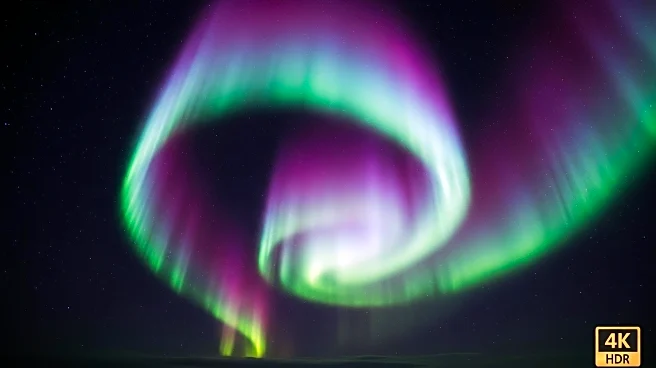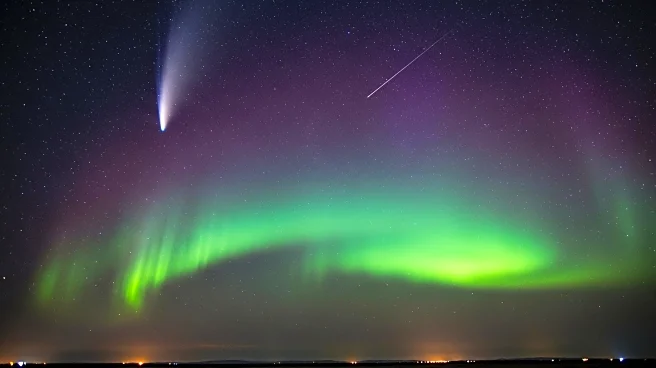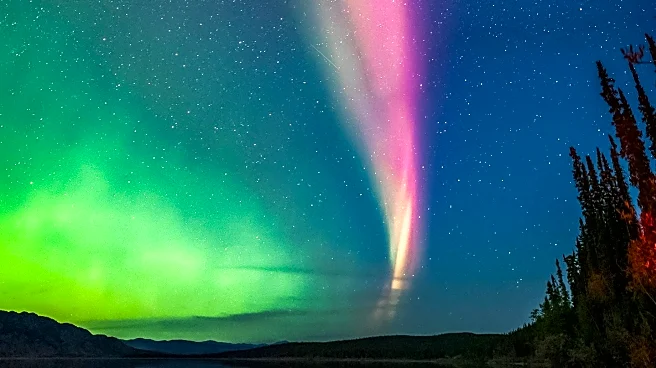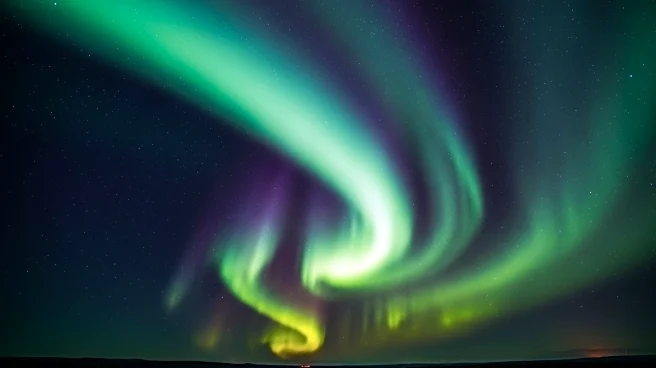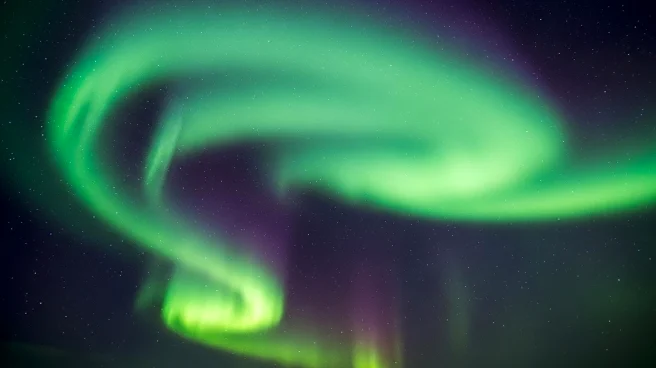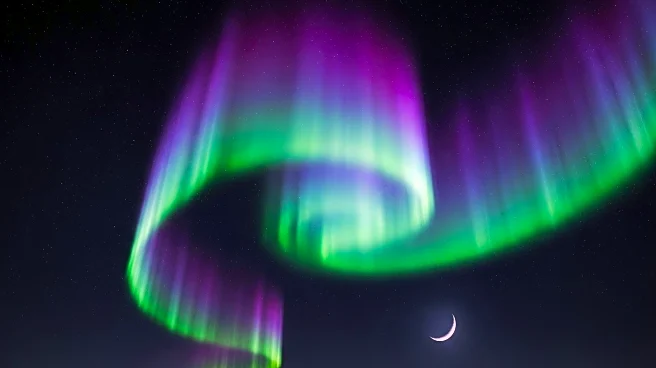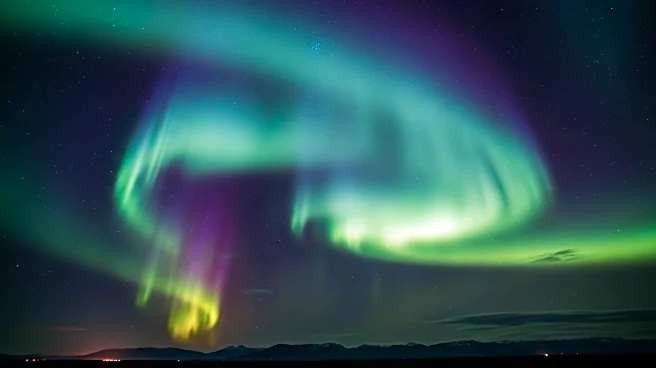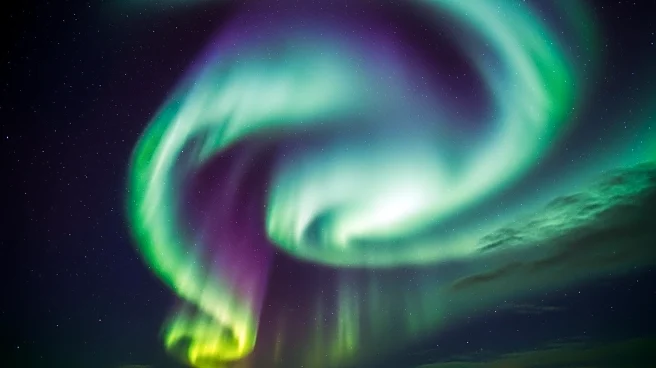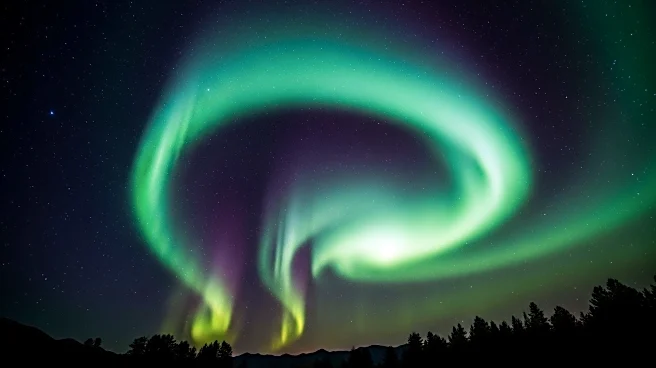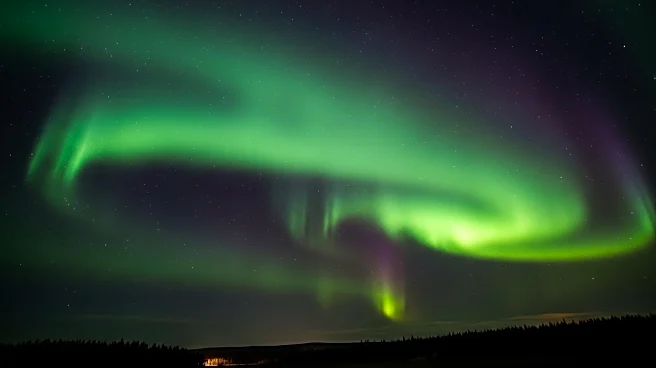What is the story about?
What's Happening?
The Aurora Borealis, commonly known as the Northern Lights, is expected to become more intense over the next two years due to the sun's 'last gasp' finale. This phenomenon is linked to the solar cycle, which peaks every 11 years during the solar maximum, characterized by increased sunspots and solar eruptions. As the sun approaches the end of its current solar maximum, it enters a phase where cooler, darker regions known as coronal holes become more prevalent. These regions release high-speed solar winds that enhance the visibility of the Northern Lights on Earth. Space weather physicist Tamitha Skov has indicated that this 'last gasp' phase typically occurs within two to three years before the solar minimum, suggesting that significant geomagnetic storms, classified as G5 on the National Oceanic and Atmospheric Administration's scale, could occur. Such storms have previously made the Northern Lights visible as far south as Mexico.
Why It's Important?
The intensification of the Northern Lights due to the sun's 'last gasp' could have significant implications for various sectors. For the scientific community, it presents an opportunity to study solar and geomagnetic activity more closely. For the tourism industry, particularly in regions where the Northern Lights are a major attraction, this could lead to increased visitor numbers and economic benefits. However, heightened solar activity can also disrupt satellite communications and power grids, posing challenges for technology and infrastructure. Understanding and preparing for these potential impacts is crucial for minimizing disruptions and maximizing the benefits of this natural phenomenon.
What's Next?
As the sun continues its transition towards the solar minimum, scientists and space weather experts will closely monitor solar activity to predict and prepare for potential geomagnetic storms. Governments and industries reliant on satellite communications and power infrastructure may need to implement measures to mitigate the risks associated with increased solar activity. Additionally, tourism boards in regions known for Northern Lights visibility may ramp up marketing efforts to capitalize on the expected increase in aurora intensity.
AI Generated Content
Do you find this article useful?
